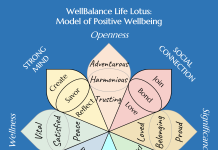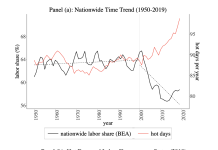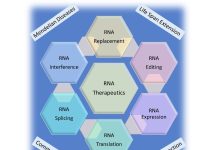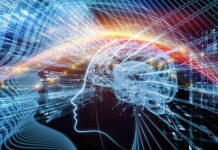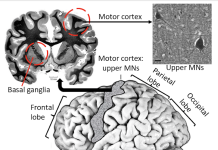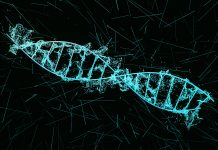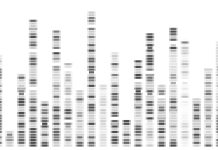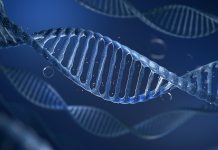Open Access Government produces compelling and informative news, publications, eBooks, and academic research articles for the public and private sector looking at health, diseases & conditions, workplace, research & innovation, digital transformation, government policy, environment, agriculture, energy, transport and more.
Home 2025
Archives
Scaled: Substation in a cable for adaptable low-cost electrical distribution
Modern power electronics meets medium voltage cables to create a high-density inline power conversion system for the grid of tomorrow.
Primate exposure to anthropogenic pollutants: Interactions with the gut microbiome and neuroendocrine SYSTEM
Michael Wasserman of Indiana University discusses interactions among the chemical exposome, microbes, and hormones in wild primates.
Personalizing wellbeing interventions in the digital era
Troy W. Norris’ WellBalance Institute is advancing the science of positive psychology and wellbeing to create personalized plans and practical tools to build happy, flourishing, and resilient lives, workplaces, and communities
Rational use of psychotropic medications in youth
This article examines a holistic approach to youth mental health care and discusses the concept of ‘deprescribing’ as a systematic method for assessing the necessity and risks associated with the continued use of medication.
Philosophy of education in the age of AI
Stephanie Schneider from SUNY Old Westbury explores philosophy and practice, focusing on building future-ready education in the age of artificial intelligence.
Civic powerhouses: How organizations drive volunteering
Rebecca Nesbit and Laurie E. Paarlberg, focus on civic powerhouses, explaining how organizations, such as faith congregations, drive volunteering.
Climate change reduced the labour share in the 21st Century
Masahiro Yoshida, from Waseda University’s Department of Political Science and Economics, presents a new theory and evidence linking climate change to the decline of labour share.
Understanding the role of botanicals in medicine
Dr Erin C. Berthold from Planted in Science Consulting LLC discusses the uses and perceptions of botanical medicines, emphasizing the necessity for coordinated global efforts to understand and regulate these substances to ensure their safe integration into healthcare.
The oncoming tsunami of RNA therapeutics
Alan Herbert, Founder and President of InsideOutBio, discusses the significant advancements in RNA therapeutics, highlighting their role in supporting public health and their transformative potential in modern medicine, particularly for addressing genetic conditions and cancer.
Harmony among civilizations: The influence of Chinese philosophy on Western idealism and contemporary revolutionary...
Germaine A. Hoston of the University of California, San Diego, demonstrates the influence of Neo-Confucianism on European idealism and Marxist revolutionary thought.
Consciousness research: The science that changes everything for CEOs
Find out here why the world’s most successful business leaders are embracing consciousness research to drive sustainable transformation.
Protecting infants from brain damage: A focus on HIE
Lee J. Martin, PhD from Johns Hopkins University School of Medicine, discusses the pathology of infant hypoxic-ischemic encephalopathy (HIE), and the research he and his team are conducting to understand cell death mechanisms related to HIE and therefore identify new therapies.
Deconstructing misconceptions: The relevance of androgens for human health
Alexandra Cara and Carol F. Elias from the University of Michigan Medical School provide insights into the critical role of androgens in human health, including their vital roles throughout various life stages.
What makes GLP1 receptor agonist drugs so effective for obesity?
Michael W. Schwartz, MD, discusses the effectiveness of GLP1 receptor agonist drugs, such as semaglutide and tirzepatide, in treating obesity as well as the role of gut-brain signaling in maintaining energy homeostasis.
Empowering the disempowered: Remote pregnancy monitoring for hard-to-reach populations
Tobias R. Kollmann, Professor at Dalhousie University, and Nima Aghaeepour, Professor at Stanford University, examine remote pregnancy monitoring for hard-to-reach populations.
Prioritizing skeletal muscle health for successful aging
Kevin A. Murach, Ph.D. at the University of Arkansas, talks us through prioritizing skeletal muscle health for successful aging, beginning with a primer on skeletal muscle aging.
Advancing space robotics: AI-driven innovation for lunar exploration and orbital operations
Dr. Sean Kalaycioglu, Toronto Metropolitan University Researcher and AIMechatroniX Inc. President, explores advancing AI-enabled space robotics for lunar exploration and orbital operations.
Raman spectroscopy for forensics: Identifying body fluid traces and gunshot residue
Here, the Department of Chemistry and the Center for Biophotonic Technology and Artificial Intelligence (CeBAI), investigates Raman spectroscopy for forensic applications, a universal technique for identifying traces of body fluids and gunshot residue.
The NAD+ stack, optimized: A multi-target strategy to support healthy aging
Research has identified key mechanisms driving aging and actionable targets for promoting longevity. A promising strategy is to preserve the cell’s ability to produce energy, repair DNA, and stress resilience, with nicotinamide adenine dinucleotide (NAD+) playing a central role. Here, Dr. Rebecca Crews presents a multi-target approach to support healthy aging.
Addressing the environmental impact of healthcare is a vital step to combat the climate...
Daniel G. Rainham and Sean D. Christie from Dalhousie University and Nova Scotia Health discuss the key areas where efforts should be directed to reduce the environmental impact of healthcare.



